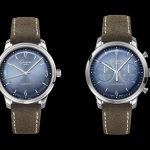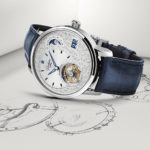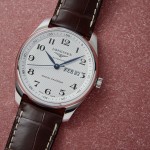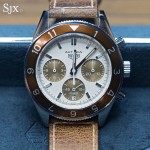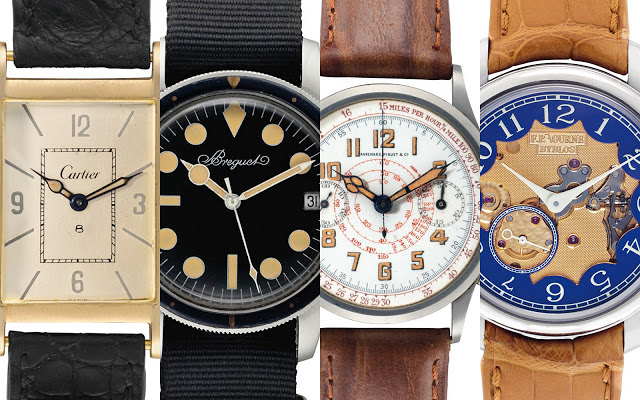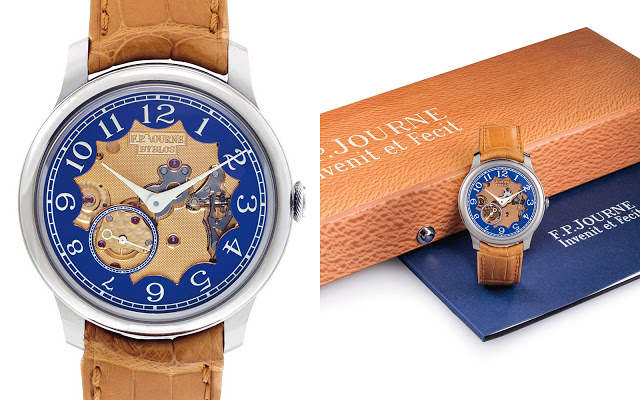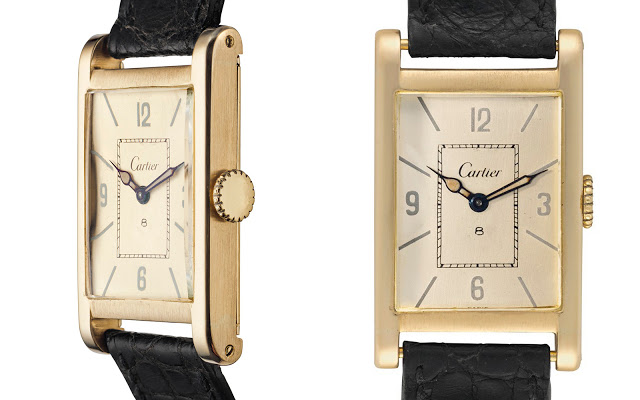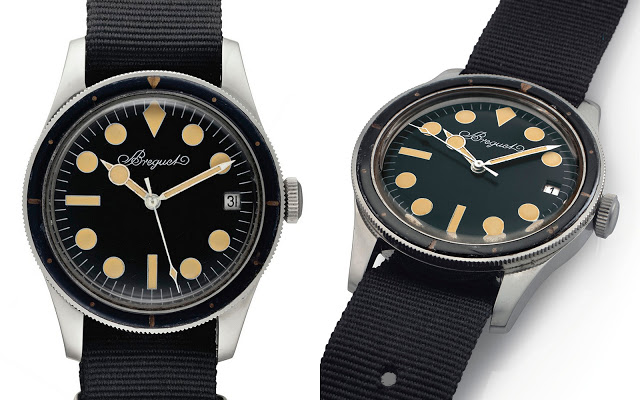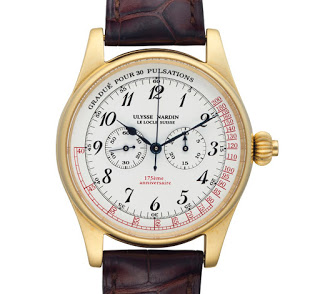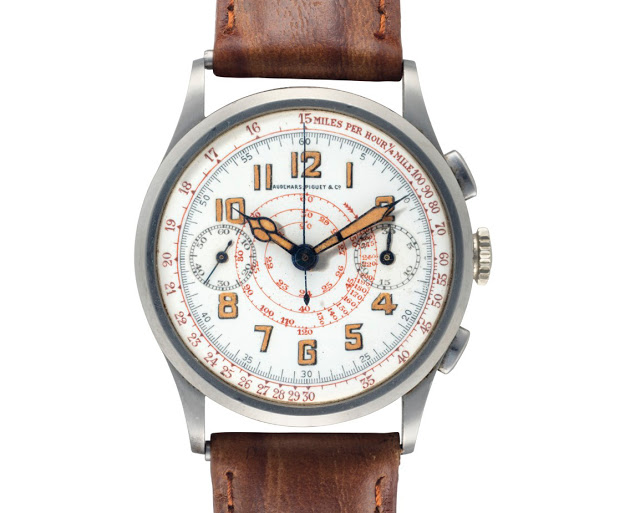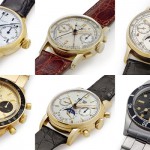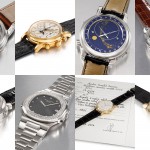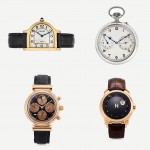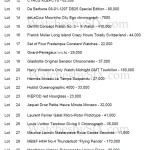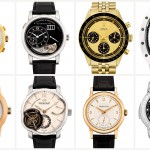Hands-On with the Glashütte Original Sixties Iconic Collection, the Secret Limited Edition
A striking departure from the typical Glashütte Original look, the Sixties Iconic Collection is made up of five timepieces with psychedelic dial colours that are limited to just 25 pieces each. We take a look at the line-up, with review, photos and price below.The Glashütte Original Sixties Iconic Collection looks like it was designed at East German party after the Berlin Wall came down, characterised by vivid dial colours and patterns that are entirely unique yet convincingly retro. And unlike many limited edition watches made in large numbers, the Sixties Iconic Collection was not announced as a limited edition, but only 125 will be made.
The Sixties Iconic Collection is almost a small run of prototypes, being the result of experiments at the dial factory recently acquired by Glashütte Original. Though the watches are not numbered as such, the Sixties Iconic Collection is actually genuinely limited, with just 25 in each colour according to Yann Gamard, the chief executive of Glashütte Original. That makes the total just 125 watches.
![]()
![]()
Despite their intriguing colours, the Sixties Iconic watches are based on the sedate Senator Sixties, a watch modelled on the Spezimatic wristwatch. Made by the state-owned East German watch factory, VEB Glashütter Uhrenbetriebe (GUB), the East German Spezimatic look is faithfully reproduced with the Senator Sixties, though with the gloss and polish of a luxury good characteristic of capitalism.
Hand-finished dials
Fittingly for a product made for members of the bourgeoisie, the Sixties Iconic Collection features dials that painstakingly made by proletarian workers. Each dial starts out as a brass blank that is either brushed with a radial finish or decorated with guilloche. It’s then covered with several layers of lacquer by hand, following by a final coat applied with a spray gun. Because the dials are coloured by hands, the effect is uneven, something labels a degrade effect, which translates as “degraded” in English. The dials are beautiful and unusual enough that the tiny inconsistencies in the finish give them character. The shade of each dial varies according to the light, and most light up at just the right angle. All of them look brilliant on the wrist, especially the reddish-orange Sixties Red.
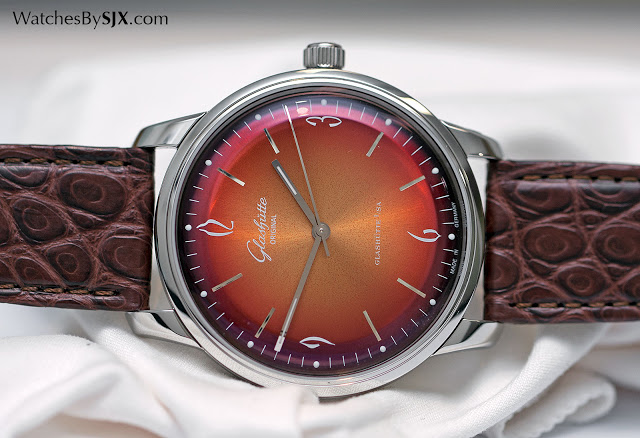
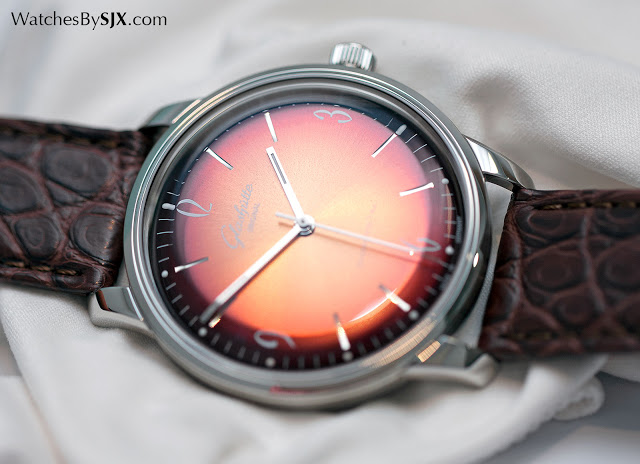
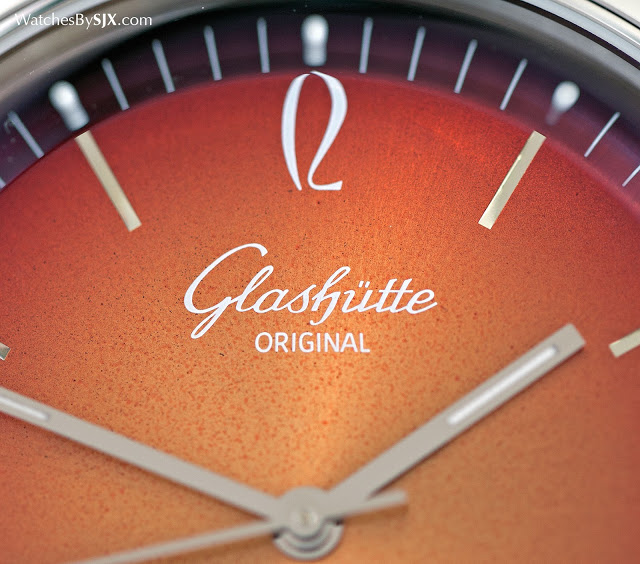
The Sixties Golden and Sixties Aqua have a similar dial finish, but in hues that are more sedate than the Sixties Red. Sixties Aqua is finished in a rich blue that’s not quite electric, but more vibrant than most blues.
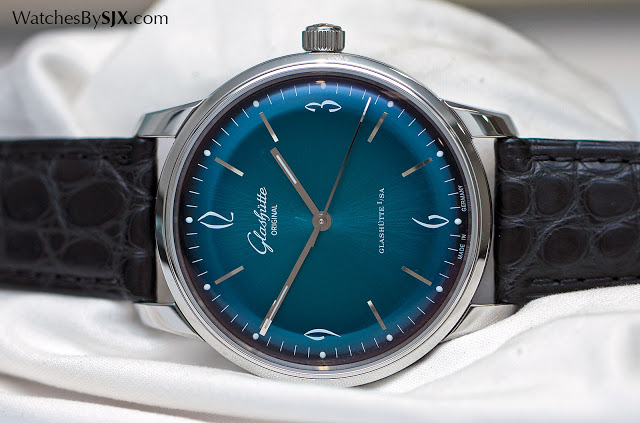
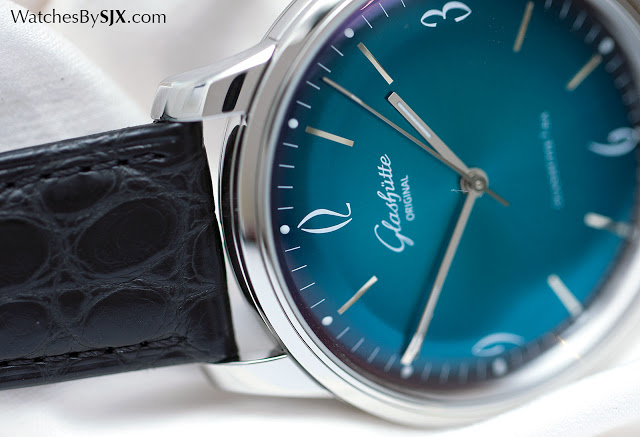
The Sixties is more subdued, though the graduated chestnut colour evokes the memory of rich and sweet maple syrup.
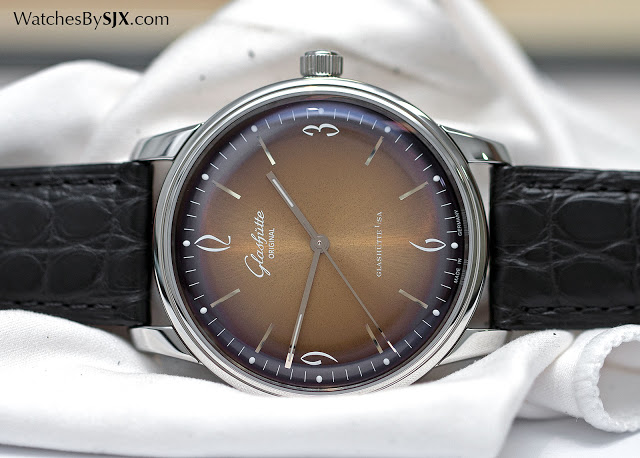
Guilloche with a 60-tonne press
The last two of the Sixties Iconic Collection both have guilloche dials with the motif stamped by a 40-year old press. Sixties Brown is the most East German of the line-up, with an Argyle pattern reminiscent of wallpaper or clothing. Up close, however, the dial reveals the intricate structure of the guilloche that looks almost organic.
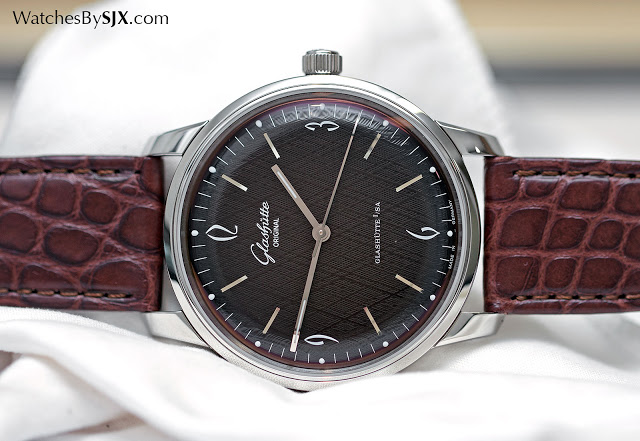
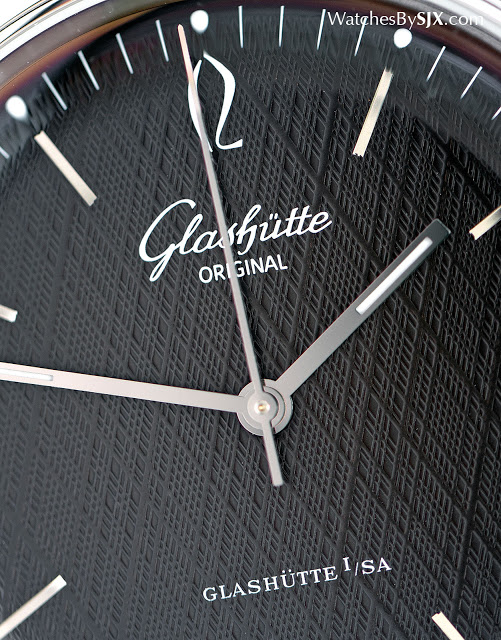
Much more visually pleasing is Sixties Grey with a guilloche that’s reminiscent of raindrops on glass. It’s an irregular pattern that radiates from the centre, with the metallic grey colour darkening towards the edges of the dial.
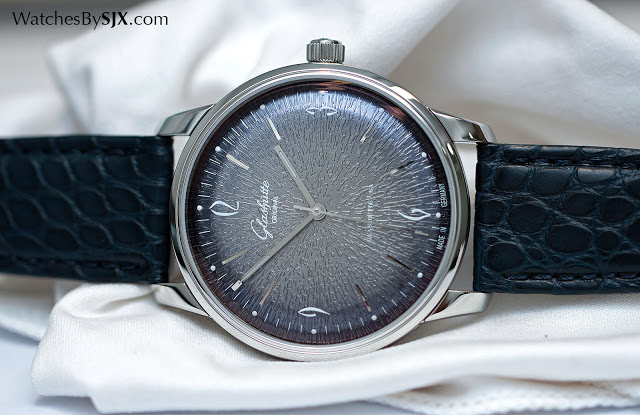
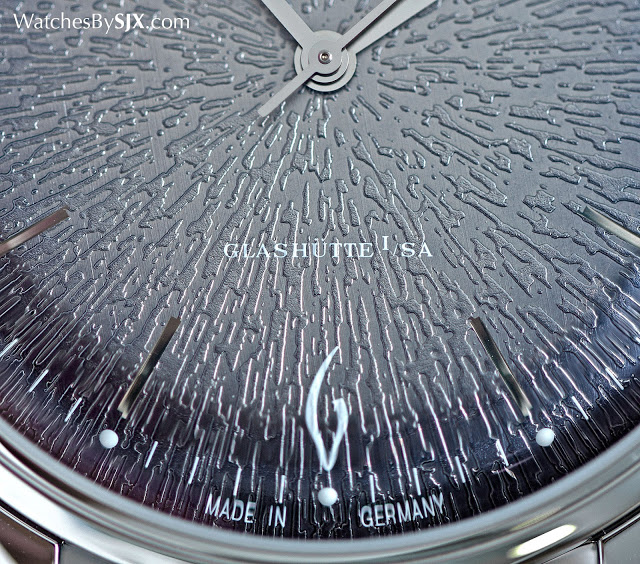
While the dials are unique, the case and movement is identical to the that in the ordinary Senator Sixties. The case is stainless steel with a 39 mm diameter, making it larger than the East German Spezimatic that inspired it, but nonetheless a modest size by modern standards. Mirror polished all round, the case is fitted with a domed sapphire crystal on the front to complete the vintage aesthetic.
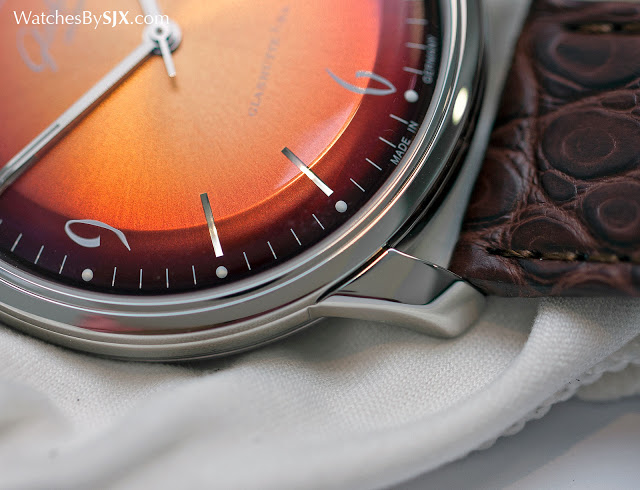
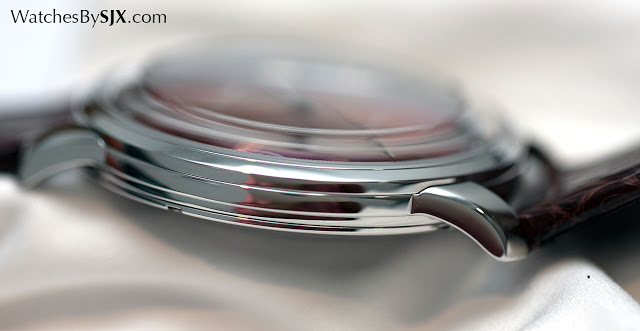
The crystal on the back is also domed, revealing the calibre 39-52 from the top and also the side. Self-winding with a solid gold mass on the rotor, the calibre is in-house like all of Glashütte Original’s movements. It’s decorated attractively (albeit by machine), and is as good as the best in the same price segment.
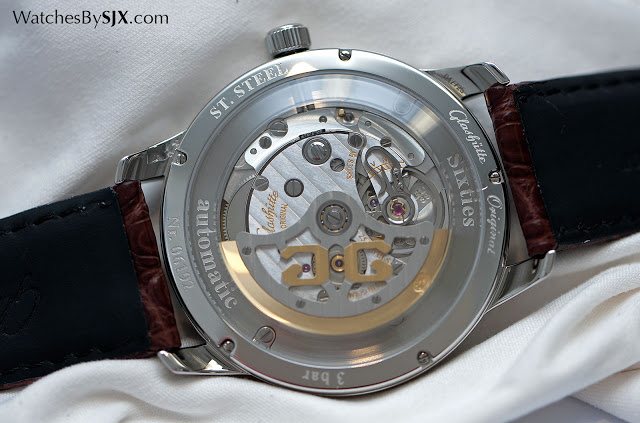
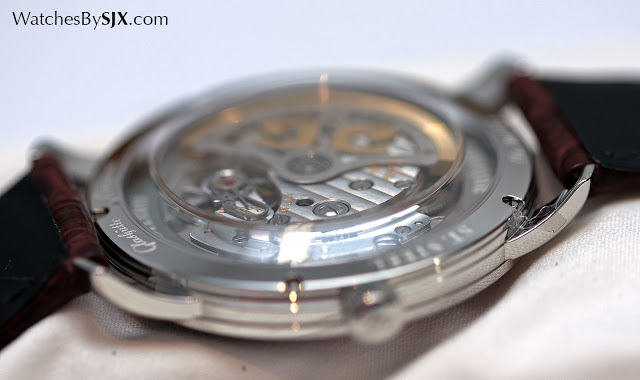
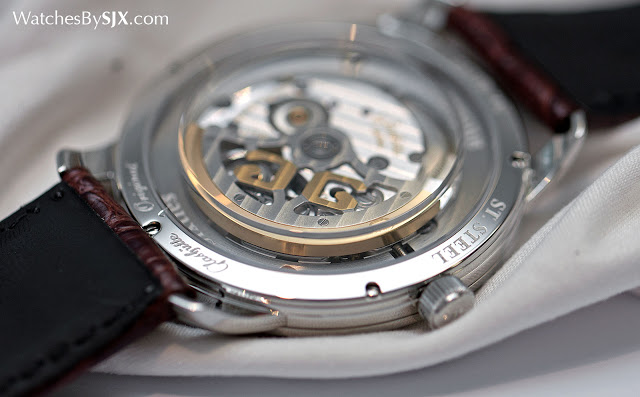
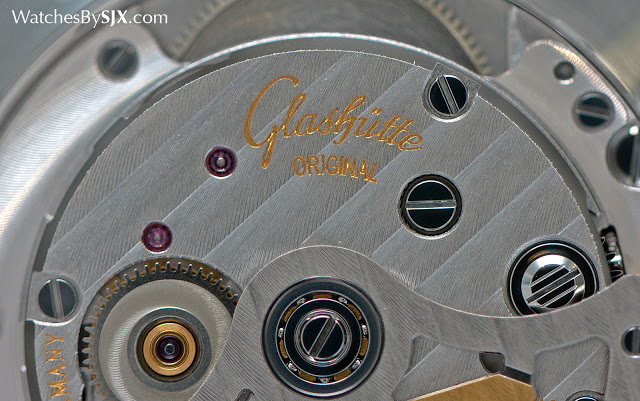
Pricing and availability
Each model of the Sixties Iconic Collection is priced at €6300 (or S$11,400 in Singapore), and the range is available only at Glashütte Original or Tourbillon boutiques (the latter being the stores dedicated to high-end watchmakers owned by the Swatch Group).
Back to top.
